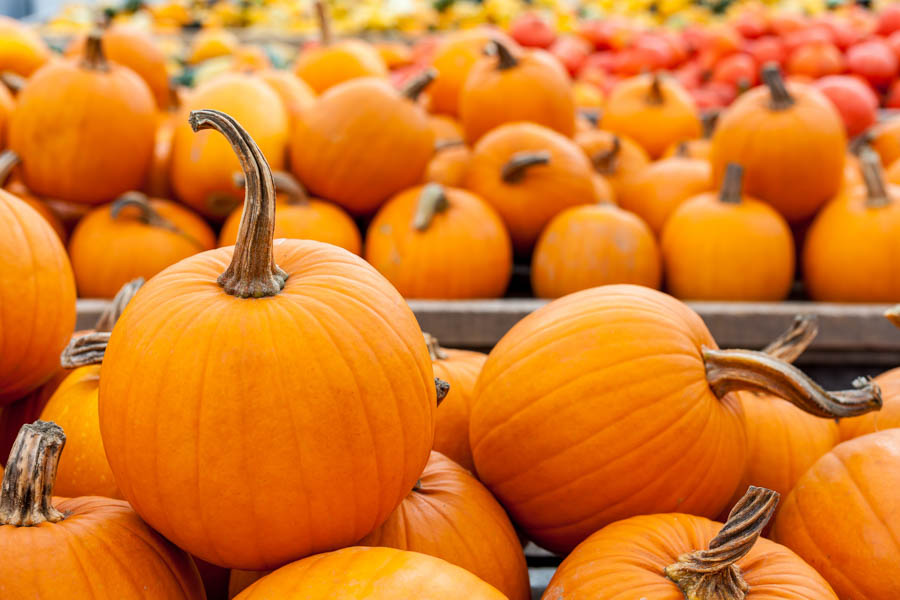Storing and Using Freshly Harvested Pumpkin

Pumpkins are ideally stored at 55-59°F at moderate relative humidity and can be stored for up to six months. Ensure good ventilation. Refrigeration is typically too humid for pumpkins; high levels of humidity will promote decay. Chilling can damage pumpkins, especially below 50°F, and will increase their rate of ethylene production. Pumpkins are sensitive to storage with ethylene producing items.
Preparing a fresh pumpkin for use in the kitchen can be somewhat daunting; though less so with a good sharp knife. Wash the outside of your pumpkin, and slice open, scooping out the insides. All pumpkin seeds are edible, and can be roasted with salt for a delicious snack. Some varieties, such as the Japanese Kakai, offer seeds without hulls for easy eating. Place slices of pumpkin in a baking dish, cover the slices with water and cover the dish with a lid. Bake at 360 deg F until tender. The pumpkin flesh can then be removed and used in a myriad of creative ways, such as in pies, muffins, breads, cookies and soups.
In recent years, the FDA has recommended that pumpkin NOT be canned due to high risk of bacterial contamination.
Freezing is the best technique for preserving pumpkin for long term use. Clean out the pumpkin, then cook and mash into a puree. Then freeze the puree in airtight containers for future use.
Though you will be tempted (or should be) to avoid wasting your halloween pumpkins, they are best used as compost after the holiday season. Jack O’ Lanterns should not be eaten after use, as they are prime homes for bacteria and other pathogens.
Interested in saving your pumpkin seeds to use for growing next year’s pumpkins? See Saving Pumpkin Seeds: It’s Complicated.
Has your pumpkin harvest left your garden bare? Read Tips for Managing Fallow Garden Beds and Containers
And finally, need some ideas for planting cool season vegetables in your fallow garden bed? How about garlic or chard?